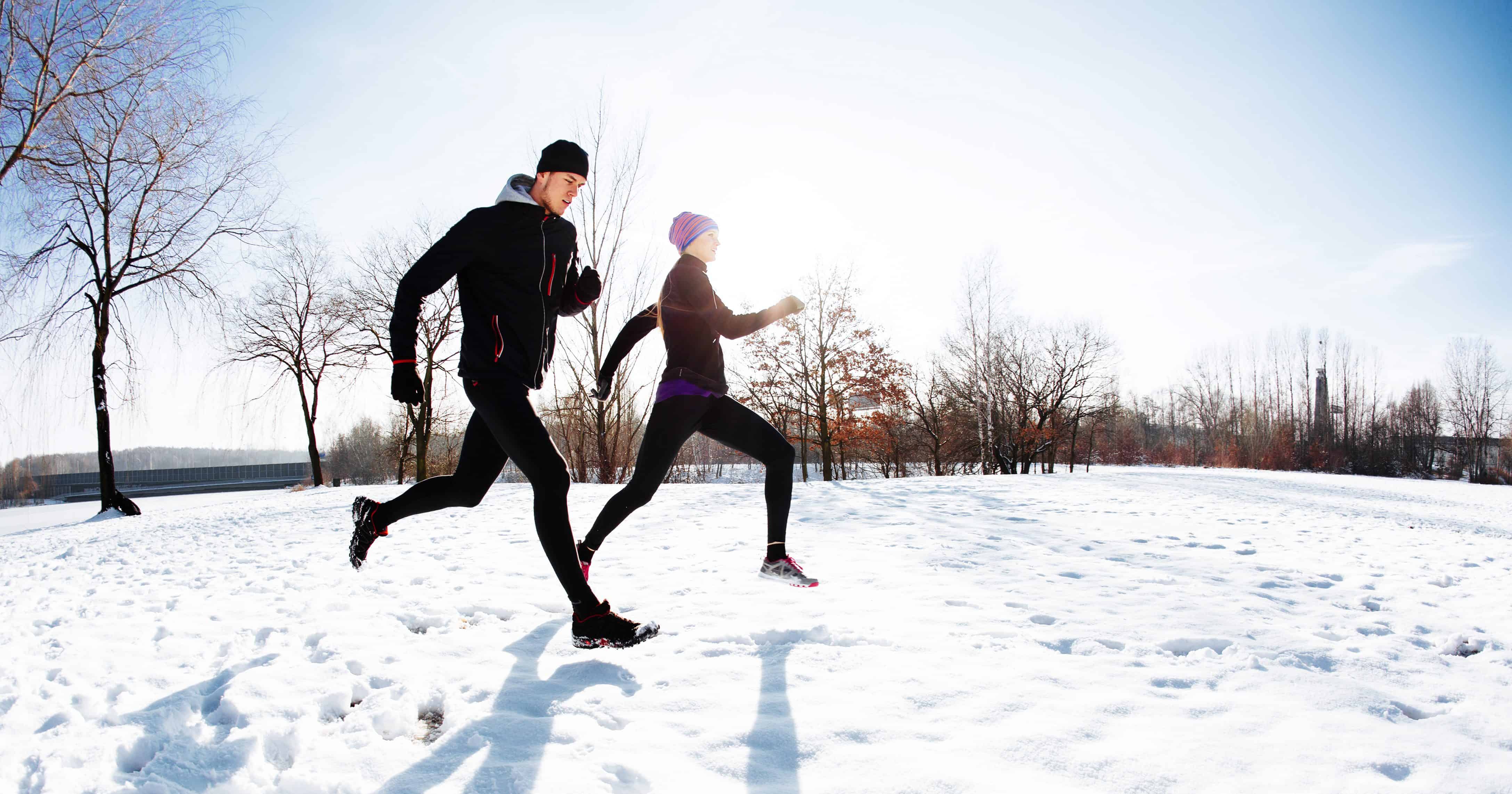
Tips for Training in Cold Weather
Now that the hot weather seasons are at an end, we’ll be moving into some colder temps over the next several months. What risks exist exercising in extreme cold weather? Let’s take a look at how you can prepare for cold-weather exercise.
When training in the extreme cold you can go from thriving to surviving in an instant. I must admit it, I have engaged in extremely cold weather training out of curiosity and sometimes sheer stubbornness. There are benefits to exercising in the cold, but you must be prepared. The key here is safety first. The first rule is to always tell someone where you plan to run/hike/bike and when you expect to be back.
Layering
Your primary strategies for success in cold weather are appropriate layering (given the intensity level) and gear. The key is not to get sweaty to the point that your base layers cannot keep up with wicking the water away from your skin. Water next to the skin in an environment conducive to rapid evaporation (think DRY winter) lends to really quick cooling. If you, by chance, also need to slow down and can’t pick up the pace for any reason, this can lead to an uncomfortable, or possibly even, an emergency situation. The best way to remedy this is to get the wet clothes OFF and have additional gear as necessary.
If you run any endurance events in cold weather, organizers will even have required emergency gear (ability to make a fire, bivy, etc.). The bottom line is that there needs to be some practice with the gear and layering strategy. Recording how you felt and what was used in a journal can be a great way to develop a workable strategy for you.
Cold Weather Exercise Performance Tips
To help keep you moving and perform well in cold weather, here are some additional tips for cold weather performance:
- In most cases for fairly vigorous activity, you should feel slightly chilled at the start of a run. If you feel toasty and warm when you are not moving, you may sweat quite a lot and early, which can lead to problems.
- Always pay special attention to your feet and hands in cold weather situations. Your feet must be able to function to help get you where you want to go. Clean, dry socks are a MUST. If your hands become numb, they will not be able to function properly to eat/drink, which will end longer endurance events abruptly. At a bare minimum, it will make it difficult to get back in a car! Spare hand and foot warmers can work well but as with all strategies….PRACTICE THEM.
- Your need for water will go down in cold weather but it will not go away. Conversely, your need for calories will increase slightly. If your water is tied to your calories, this is something that will need to be addressed for longer endurance events. Having calories available that are at least in part separate from your water is a good idea.
- Have a strategy for keeping water in liquid form. Water parkas (closed-cell foam that zip/Velcro over your water bottle) are great for the coldest weather. In many conditions, a simple insulated water bottle will do. If you use a water bladder in an endurance event, practice clearing the hose (blow excess water out) and keeping the hose and bladder close to your body to avoid frozen hoses or water. Again, PRACTICE….do you see a trend here?!?
- Again, it is always a good idea to tell someone if you go out in really cold weather for an adventure. Don’t rely on a phone since they drain batteries VERY quickly in the cold. If you do carry one though, keep it close to your body to give it the best chance of working.
Cold Weather Fitness
Finally, my experience in cold weather primarily comes from cold weather running and ultra-marathons over the years in the woods. If you practice and prepare, cold weather physical activity is some of the most rewarding and fun. Moreover, the people you will meet are some of the best types!
If you need a new exercise program or help getting fit, come see me at Elite Sports Clubs for a FREE fitness consultation. We’ll go over your current habits and see where improvements can be made. Are you ready to start a new fitness journey? With abundant group fitness classes, advanced equipment, and knowledgable instructors, Elite Sports Clubs can help! Contact our fitness experts to get started today!
Set up a Free Fitness ConsultationWritten by Matt Bartz, Personal Training Director and Nutrition Coach at Elite Sports Club-River Glen
Matt has a Master of Science (M.S.), Kinesiology and Excercise Science degree and a Bachelor of Science (B.S.), Kinesiology and Exercise Science degree from the University of Wisconsin – Milwaukee. He is a Certified Functional Strength Coach that specializes in functional resistance training for general health and all types of athletic endeavors. He enjoys running trail ultra-marathons, playing tennis, and spending time with his wife Jen and daughter Emma Carlin.
Matt started his career in 1997 and he joined the Elite team in 2012.
